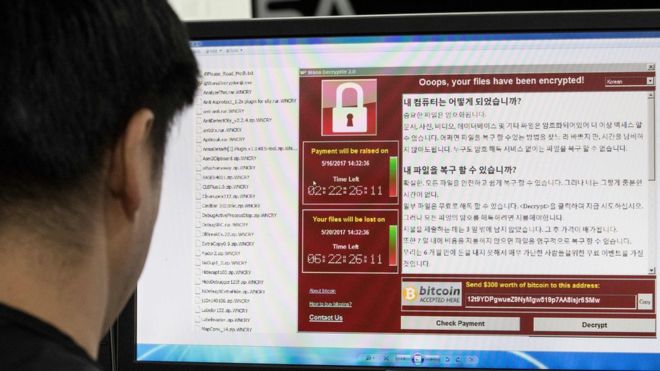
More than $140,000 (£105,000) worth of bitcoins paid by victims of the WannaCry ransomware outbreak have been removed from their online wallets.
It has been nearly three months since infections struck organisations worldwide, including the NHS, which faced days of disruption as a result.
The bitcoin activity was noticed by a Twitter bot set up by Quartz journalist Keith Collins.
The balance of all wallets known to be associated with WannaCry is now zero.
The ransomware hit many businesses hard, quickly infecting multiple computers on corporate networks and encrypting them so they became useless.
Back in May, many cyber-security experts and law enforcement agencies advised victims that paying the ransom would probably only encourage other cyber-criminals and not result in restored access to systems.
However, many clearly decided to take a chance.
According to bitcoin-monitoring company Elliptic, an initial portion of the WannaCry funds were moved in late July.
And at about 04:10 BST on Thursday, the vast majority were finally withdrawn in entirety.
Many watchers expect that the WannaCry bitcoins will be put through a “mixer” – in which the currency is transferred and mixed into a larger series of payments that make it much harder to track where it ends up.
Analysis
By Alan Woodward, cyber-security adviser to Europol
Many people assume Bitcoin is anonymous: the online equivalent of cash. However, every transaction is completely visible to anyone who cares to look.
There are even online sites that allow you to view what is happening in the blockchain – the distributed ledger that records all bitcoin movements.
The blockchain is more like a Swiss bank account: you know the account number and which account transfers money to which other accounts, but you don’t necessarily know who stands behind that account number.
A technique called “cluster analysis” looks across all of these bitcoin addresses and attempts to find addresses that are being used by the same people.
Then, some of the other transactions in that cluster, which were not intended to be anonymous, can provide evidence of who owns those addresses.
Law enforcement agencies often use this classic approach to track criminals – the idea, of course, is: “Follow the money.”
Source – BBC











Thanks
Oh Yeah! We cannot forget this WANNACRY RANSOMWARE that easily